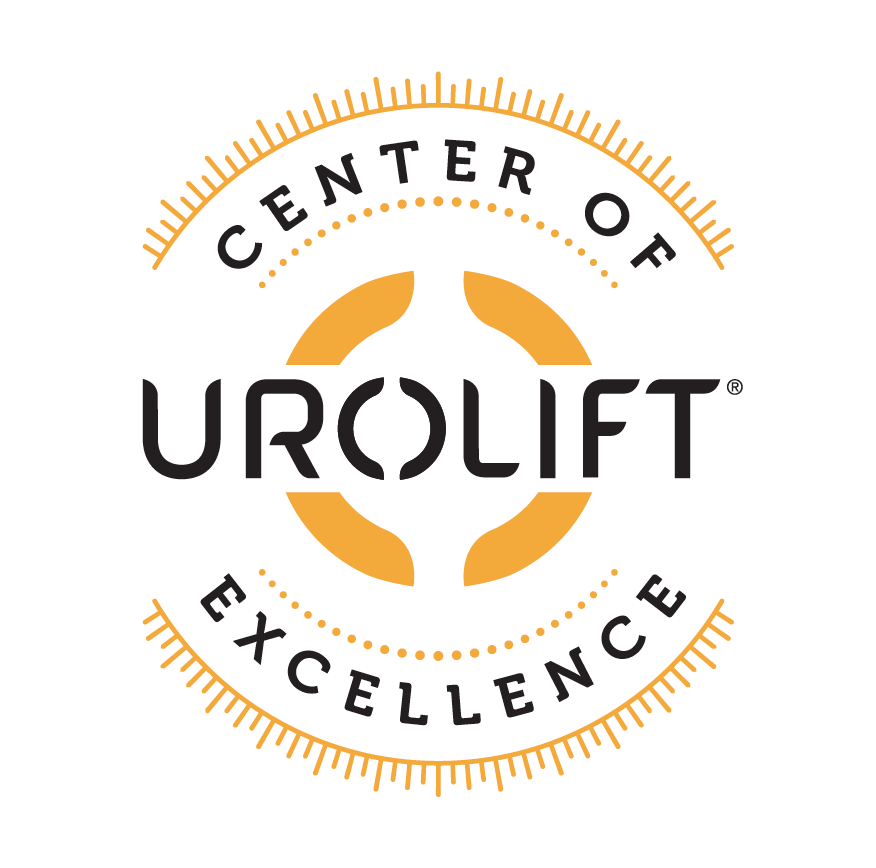Urology Procedures
Blue Light Cystoscopy with Cysview
A cystoscopy is a medical procedure typically preformed in office, where Dr Lance Walsh uses a thin, tube-like telescope called a cystoscope to look directly into the bladder for a close examination of the lining. This procedure is used to help find the cause of symptoms, such as hematuria or blood in the urine, and to treat or monitor conditions.
To learn more about Blue Light Cystoscopy with Cysview, visit Advanced Urology Institute at Titus - Blue Light Cystoscopy with Cysview.
 Urolift
Urolift
The UroLift® System is a new, minimally invasive approach to treating BPH for patients looking for an alternative to drug therapy or more invasive surgery. The UroLift System is a straightforward procedure that utilizes tiny implants to lift and hold the enlarged prostate tissue out of the way so it no longer blocks the urethra. There is no cutting, heating or removal of prostate tissue.
To learn more and find out if the Urolift procedure is right for you, visit Advanced Urology Institute at Titus - UroLift System.
HoLEP
Prostate enlargement is something that occurs in men as they age. Affected men may experience symptoms such as issues with urination, dribbling, and urgency. The HoLEP procedure is a minimally invasive treatment for benign prostate enlargement that can reduce the size of the prostate. This procedure, which requires specialized training, is offered here at Advanced Urology Institute at Titus for your benefit and can improve your well-being by relieving symptoms associated with prostate enlargement. Dr. Walsh was expertly trained on the HoLEP technique in Cambridge, England with Dr. Tev Aho, who one of the most experienced urologists for this procedure.
To learn more about the HoLEP procedure and its advantages, visit Advanced Urology Institute at Titus - HoLEP.
daVinci Robotic Prostatectomy
The da Vinci® Surgical System is a sophisticated robotic platform designed to expand the surgeon’s capabilities and offer a state-of-the-art minimally invasive option for major surgery. Advanced Urology Institute’s Lance Patrick Walsh, MD, PhD, is a highly trained urologic surgeon using the da Vinci robotic surgical system to perform prostate surgery (prostatectomy).
One of the most common treatments for prostate cancer involves the surgical removal of the prostate gland, known as radical prostatectomy. Traditional radical prostatectomy requires a large, 8-10 inch incision. This open surgery commonly results in substantial blood loss, a lengthy and uncomfortable recovery and the risk of impotence and incontinence.
If your doctor recommends surgery to treat your prostate cancer, you may be a candidate for a new, less-invasive surgical procedure called da Vinci Prostatectomy. The da Vinci Prostatectomy (dVP) performed with the da Vinci Surgical System represents the fastest growing treatment for prostate cancer today.
To learn more about this minimally invasive procedure, visit Advanced Urology Institute at Titus - daVinci Robotic Prostatectomy.
Penile Implants
Problems getting or keeping an erection is called erectile dysfunction, or ED. It’s hard to know how many men in the U.S. have ED, but estimates range from 15 to 30 million. Most of the time, ED has a physical cause and can affect self-esteem, cause frustration, anger, and sadness. The good news is that ED is treatable at any age.
A penile implant is discretely placed into a man’s penis and designed to help him achieve an erection. Once implanted, the man is back in control of his body and the implant can be effectively used on demand.
To learn more about this procedure, visit Advanced Urology Institute at Titus - Penile Implants.
Urodynamics
If you have a problem with urine leakage or blocked urine flow, Advanced Urology Institute may be able to help. One of the tools we may use to evaluate the cause of your symptoms is urodynamic testing. Some urodynamic tests are relatively simple and can be done in a doctor’s office. Other tests require sophisticated instruments to measure the amount of pressure experienced by the bladder and urethra.
To learn more about this procedure, visit Advanced Urology Institute at Titus - Urodynamics.
Moses Laser Lithotripsy
The Holmium laser has significantly improved the management of stones, providing a less invasive and more effective treatment. Holmium lasers and associated fibers fragment stones of any composition or size throughout the urinary tract.
Advanced Urology Institute at Titus utilizes the high powered Moses Holmium Laser, which in addition to the above benefits, also decreases surgery time and “dusts” the stone down further, significantly reducing the use of fragment extraction tools, thus even more decreasing the invasiveness. This technique provides for a 95% success rate with a single treatment as accessibility is improved as well as stone migration reduced.
Just as Moses parted the Red Sea, Lumenis created a technique for their laser to part the waters and attract the stone in place as the surgery is performed, as opposed to other lasers that can sometimes actually repel the stone.
To learn more about this procedure, visit Advanced Urology Institute at Titus - Moses Laser Lithotripsy.





